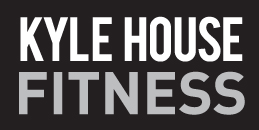Why HIIT Classes Burn More Calories in Less Time
High-Intensity Interval Training, or HIIT, has become a buzzword in the fitness world for good reason. It's a workout strategy that can help you burn more calories in less time compared to traditional steady-state cardio exercises. But what's the science behind this phenomenon? In this blog post, we'll explore why HIIT burns more calories and why it's an effective way to reach your fitness goals.
Understanding HIIT (High Intensity Interval Training):
HIIT is a training method that involves short bursts of intense exercise followed by brief periods of rest or low-intensity recovery. These cycles of high intensity and recovery are repeated throughout the workout. The workouts are typically shorter in duration compared to steady-state cardio, making them a popular choice for people with busy schedules.
EPOC - The Afterburn Effect: One of the key reasons HIIT burns more calories is a phenomenon known as Excess Post-exercise Oxygen Consumption (EPOC), often referred to as the afterburn effect. During high-intensity exercise, your body consumes more oxygen, which is needed to break down the fuel (calories) for energy. However, after the workout, your body continues to require additional oxygen to restore various physiological functions to their pre-exercise state. This includes replenishing energy stores, repairing muscle tissue, and removing metabolic byproducts.
This post-exercise oxygen consumption leads to an elevated calorie burn even after you've finished your HIIT session, and it can last for hours, depending on the intensity and duration of your workout. This "afterburn" effect is a significant contributor to the overall calorie expenditure during and after a HIIT workout.
Increased Metabolism: HIIT can boost your metabolism over the long term, helping you burn more calories even when you're not exercising. This occurs because HIIT promotes muscle growth and improves muscle quality. Muscle tissue burns more calories at rest compared to fat tissue. The more lean muscle you have, the higher your basal metabolic rate (BMR), which means you burn more calories throughout the day, even when you're not working out.
Efficiency in Time: HIIT workouts are highly efficient, and they can be completed in a shorter amount of time compared to traditional cardio workouts. This efficiency is especially appealing to those with busy schedules. You can get a fantastic calorie burn and overall fitness improvement in as little as 20-30 minutes, making HIIT a practical choice for many individuals.
Fat Loss: HIIT has been shown to be particularly effective for fat loss. The combination of the EPOC effect, increased metabolism, and the intensity of HIIT workouts can help your body burn fat for fuel more effectively. Furthermore, HIIT may improve insulin sensitivity, which can have a positive impact on fat storage and utilization in the body.
In summary, HIIT is a powerful calorie-burning workout method because of the EPOC effect, increased metabolism, and the efficiency of time it offers. It's not just about the calories you burn during the workout; it's also about the calories you continue to burn even after you've finished exercising. HIIT is an excellent choice for those looking to maximize their calorie burn, improve cardiovascular health, and achieve their fitness and weight loss goals in a time-efficient manner. Whether you're a fitness enthusiast or just starting your fitness journey, incorporating HIIT into your routine can be a game-changer when it comes to burning more calories.



